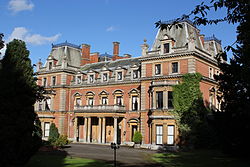| Palmer baronets | |
|---|---|
 Escutcheon of the Palmer baronets of Carlton | |
| Creation date | 1660 [1] |
| Status | extant |
| Seat | Carlton Curlieu Hall |
| Former seat | East Carlton |
| Motto | Par sit fortuna labori, May the success be equal to the labour [1] |
The Palmer Baronetcy, of Carlton in the County of Northampton, was created in the Baronetage of England on 7 June 1660 for the lawyer and politician Geoffrey Palmer. [2] The second Baronet was Member of Parliament for Higham Ferrers. The third, fourth and fifth Baronets all represented Leicestershire in the House of Commons. The fifth Baronet served as High Sheriff of Leicestershire in 1782 and the eighth Baronet as High Sheriff of Northamptonshire in 1871.
Contents
The family seat for 500 years was East Carlton Hall, Northamptonshire until 1933 since when it has been Carlton Curlieu Hall, Leicestershire. [3] The title vests in its twelfth holder. [4]

